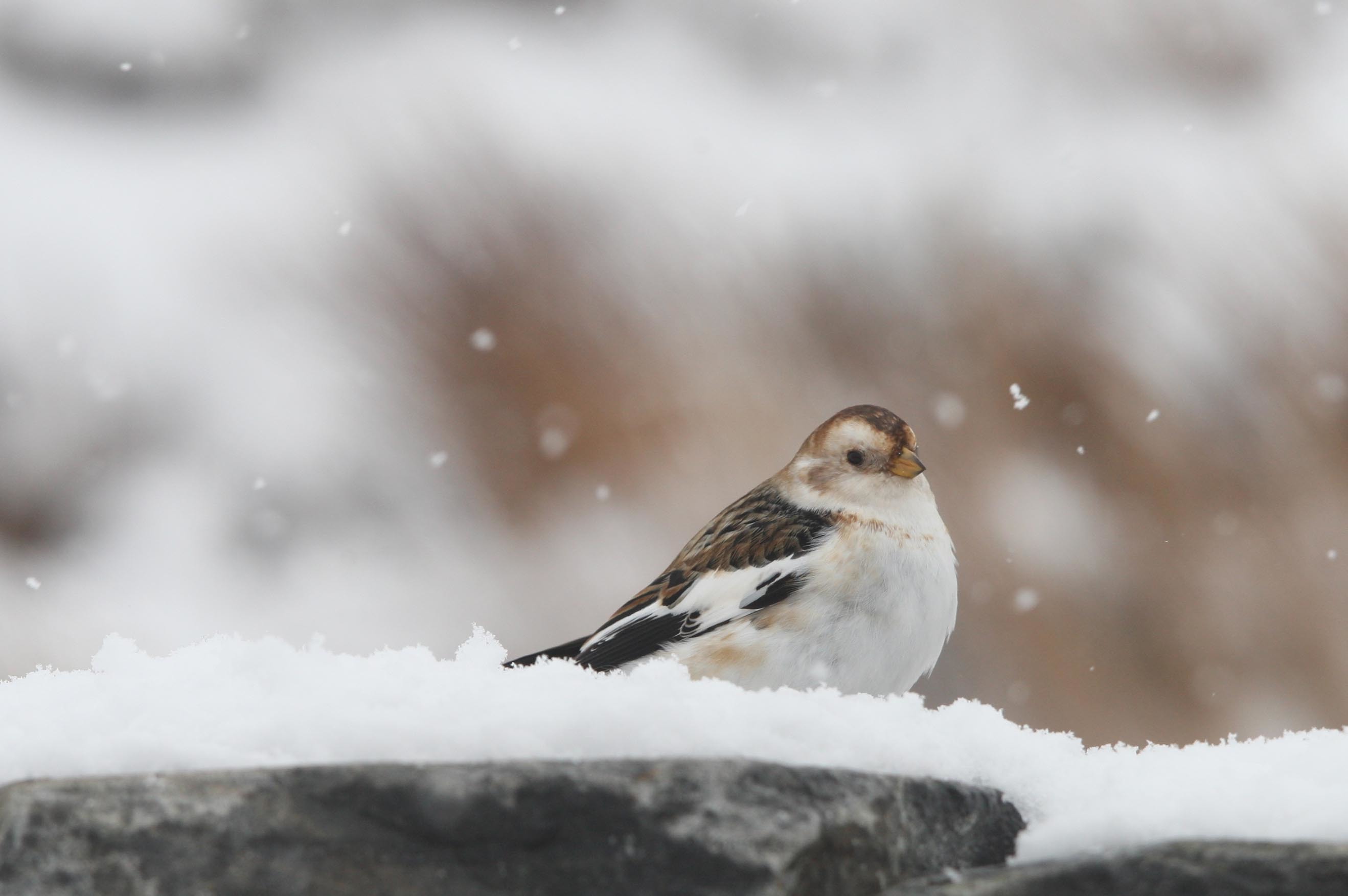
THE UK’s breeding population of snow buntings has been revealed for the first time after scientists searched some of Scotland’s highest peaks for the birds.
Globally snow buntings, which weigh no more than a golf ball and have a striking snowy plumage, breed around the Arctic from Scandinavia to Alaska, Canada and Greenland.
While thousands of snow buntings overwinter all around the UK, they only breed in this country near the tops of the highest mountains in Scotland, where the breeding population has now been estimated at 60 pairs.
The numbers have been revealed after scientists and volunteers undertook “challenging” surveys of mountain peaks in the Cairngorms and the Highlands, including Ben Nevis and Ben Alder, to listen for singing males.
The survey, conducted in June 2011, involved searching 58 sites over an area of 12,000 hectares (30,000 acres) and analysis has now been published revealing there are an estimated 60 pairs of breeding birds.
The figures, gathered through the fieldwork led by the RSPB and Scottish Natural Heritage, will provide a baseline to help conservationists see if changes to their mountain homes are affecting the species.
The birds are only found on the highest peaks in Scotland in summer, where they breed near the tops of the mountains in corries and often feed close to any patches of snow which remain, wildlife experts said.
Dr Daniel Hayhow, RSPB conservation scientist, said: “Fieldwork in the UK doesn’t come much more challenging than surveying snow buntings up some of the highest peaks in Scotland.
“During the survey the team were climbing 3000 ft mountains each day while battling the extreme weather conditions that can be found at the peaks.”
He added: “There has always been an element of mystery surrounding the number of snow buntings in the UK dating back to the 1930s as never before have all sites been surveyed in a single year.
“Now we have an estimate of the national breeding population we’ll be able to use these findings to detect any change in their numbers allowing us to better understand how changes to their montane environment might be impacting them.”

Enjoy the convenience of having The Sunday Post delivered as a digital ePaper straight to your smartphone, tablet or computer.
Subscribe for only £5.49 a month and enjoy all the benefits of the printed paper as a digital replica.
Subscribe